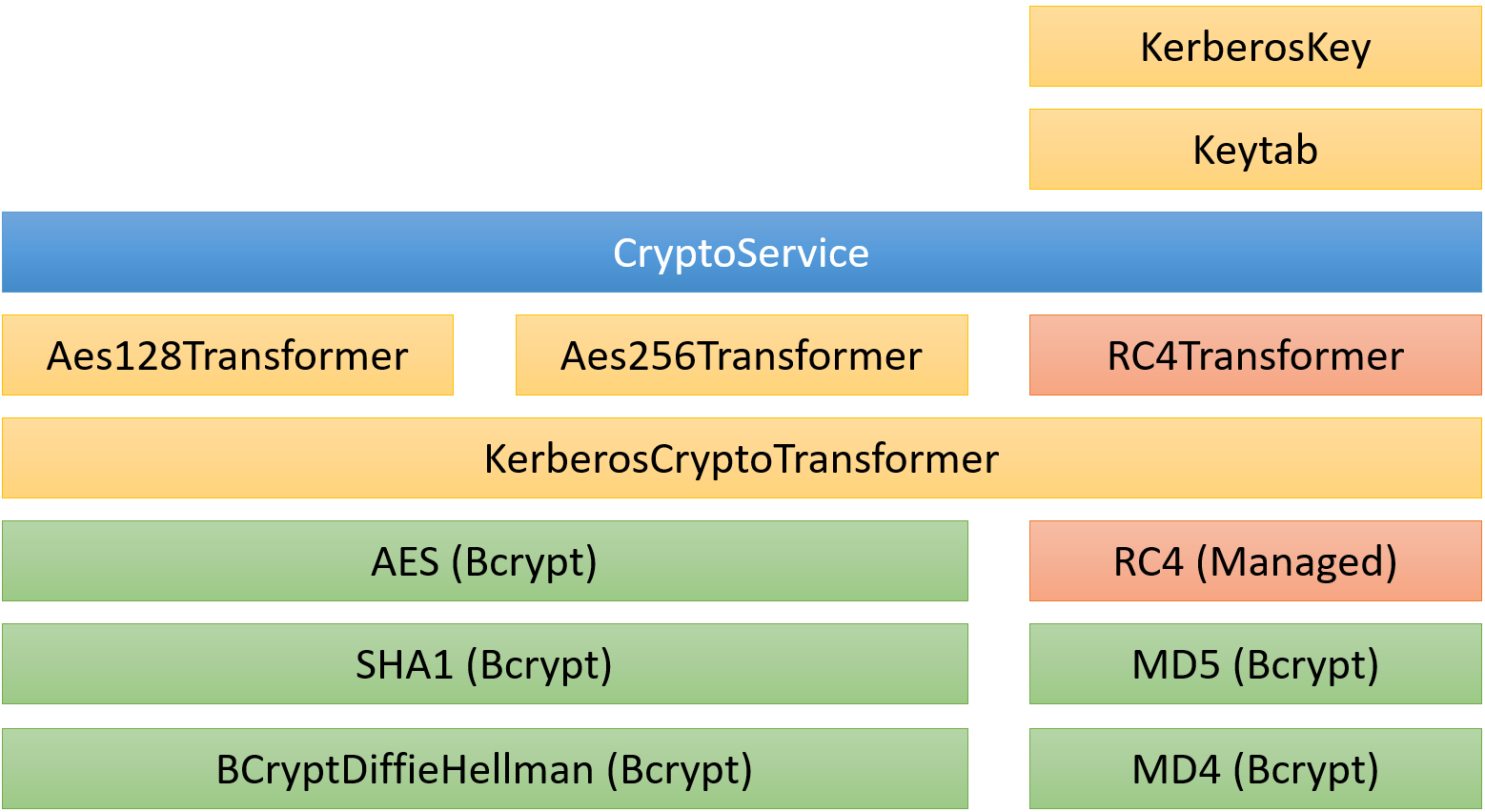About Cryptography in Kerberos.NET
Kerberos as used in the real world is an implementation of a handful of specifications. If you take a look at the deep dive document you can see the various specs that make up the functional aspects of the protocol. There are additional specs that define the cryptographic algorithms used by Kerberos:
- [RFC3961] Encryption and Checksums
- [RFC3962] AES Encryption with SHA1 Checksum
- [RFC4757] RC4-HMAC Encryption used by Windows
You can follow those specs further down the rabbit hole into distinct primitives. These specs in particular define the characteristics of things like key derivation, padding, negotiation, etc.
This library implements the RFC's above and, with one exception, relies on the platform to do any real crypto operations. All of these primitives are exposed via a platform abstraction layer, the CryptoPal. This Pal exposes the dozen or so operations required by the library and in most cases just wraps .NET's APIs.
The code is structured into 3 broad areas: publicly-consumable APIs (CryptoService, KerberosCryptoTransformer, DecryptedKrbMessage, etc.), algorithm-specific implementations (Aes128Transformer, etc.), and platform-specific primitive implementations or wrappers (BCryptDiffieHellman, etc.).
There is one primitive implemented directly in the library: RC4. It's only there for backwards compatibility and should not be used.
The publicly consumable API's are the Kerberos-specific algorithms. They directly implement the above RFCs, including things like key-stretching and derivation. The logical structure looks something like this:
